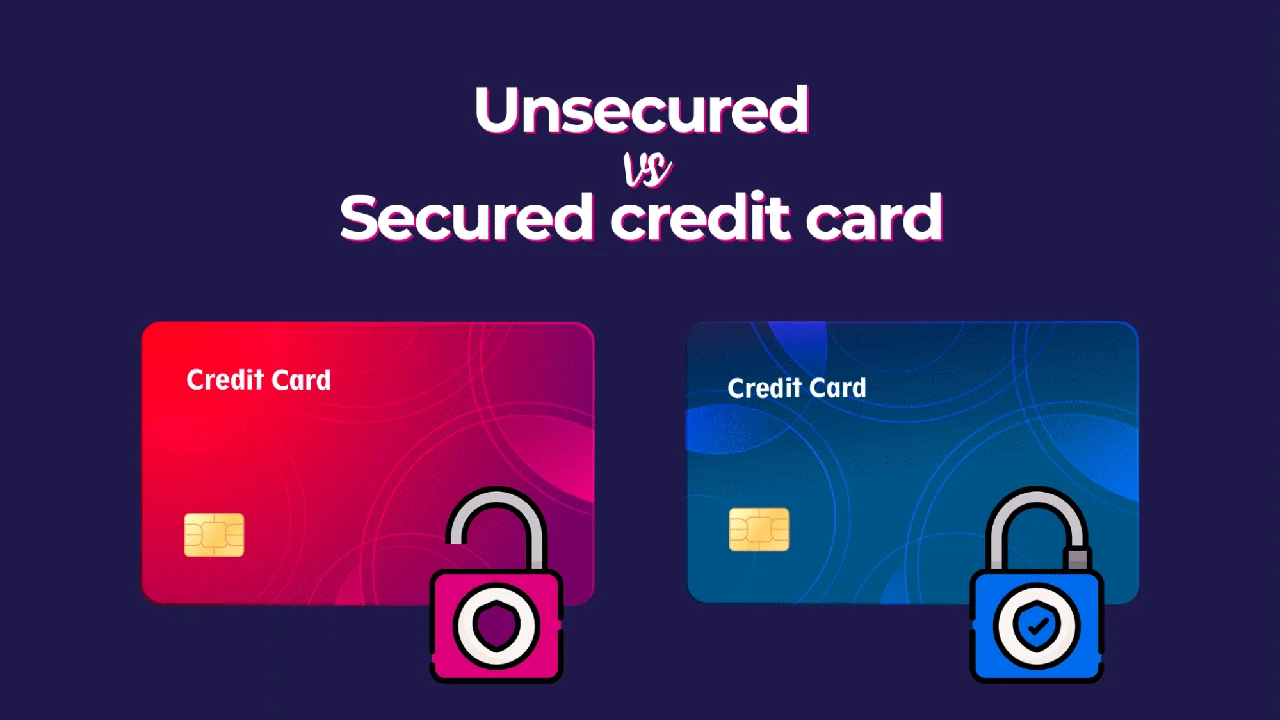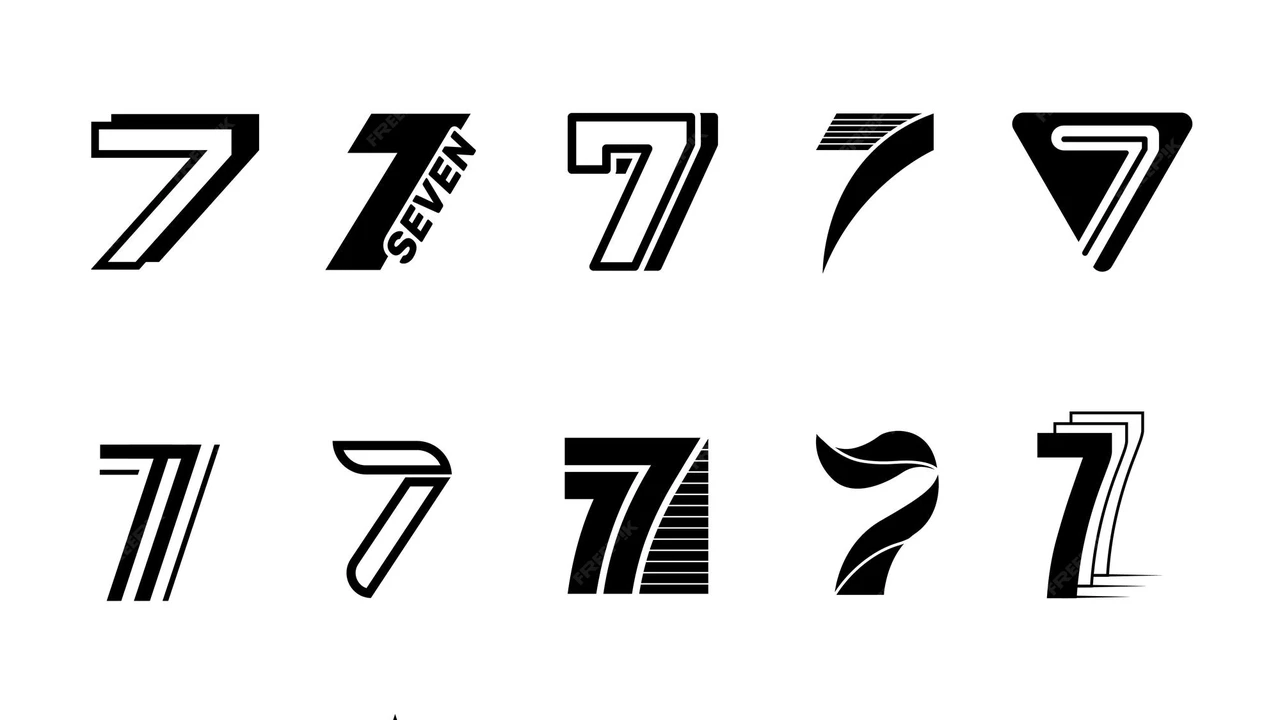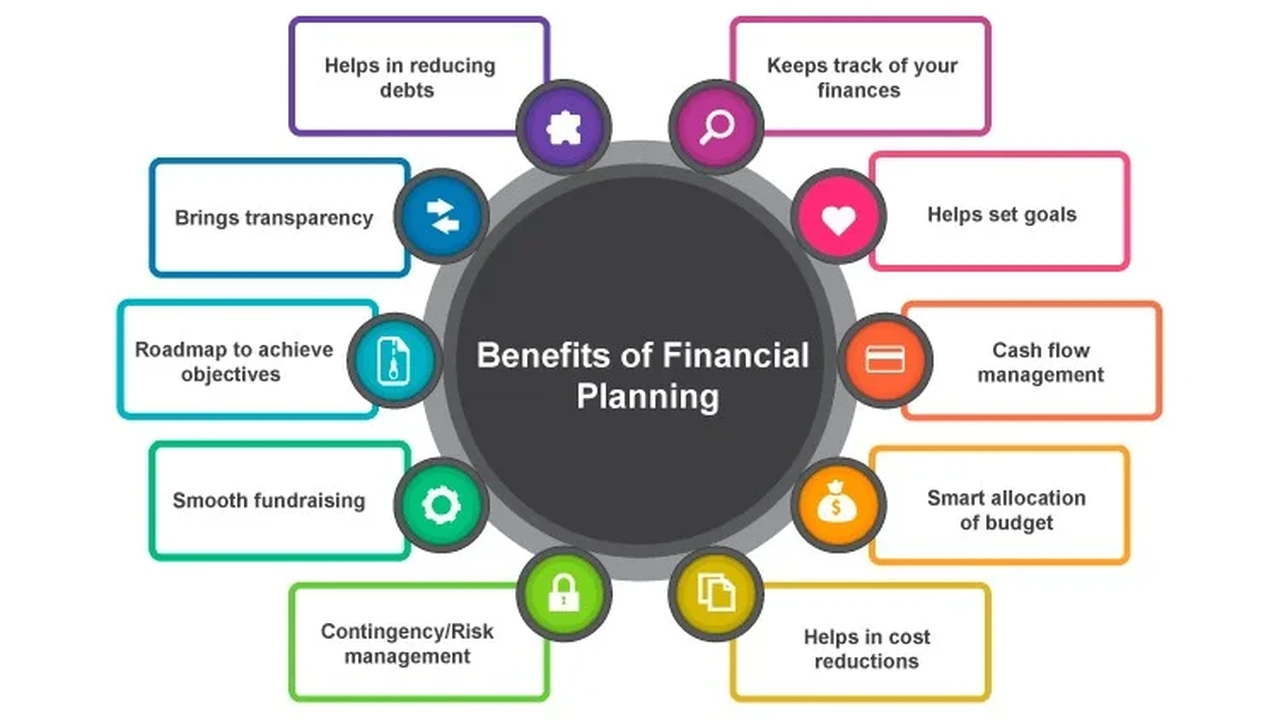3 Best ETFs for Diversified Portfolio Building
Discover the top 3 Exchange Traded Funds (ETFs) that offer excellent diversification for your investment portfolio.

3 Best ETFs for Diversified Portfolio Building
Hey there, future financial wizard! So, you're looking to build a diversified investment portfolio, and you've heard about ETFs. Smart move! Exchange Traded Funds are like a basket of various investments – stocks, bonds, commodities, you name it – all bundled into one easy-to-trade package. They offer diversification, often lower fees than traditional mutual funds, and the flexibility of trading throughout the day like a stock. But with so many ETFs out there, how do you pick the best ones for a truly diversified portfolio? Don't sweat it, I'm here to break down three fantastic options that can form the cornerstone of your investment strategy. We'll dive deep into what makes them great, who they're best for, and even compare some specific products you can consider.
Understanding ETFs for Portfolio Diversification
Before we jump into the specific ETFs, let's quickly chat about why diversification is so crucial. Imagine putting all your eggs in one basket. If that basket drops, you're out of luck, right? The same goes for investing. If you put all your money into one company's stock, and that company hits a rough patch, your entire investment could suffer. Diversification means spreading your investments across different asset classes, industries, and geographies to reduce risk. ETFs are brilliant for this because a single ETF can hold hundreds or even thousands of underlying securities, giving you instant diversification with just one purchase.
When we talk about 'best' ETFs for diversification, we're generally looking for funds that cover broad market segments, have low expense ratios (the annual fee you pay), and are highly liquid (easy to buy and sell). We also want to consider their underlying holdings and how well they align with different investment goals, whether you're aiming for growth, income, or a balanced approach.
Vanguard Total Stock Market ETF VTI for Broad Market Exposure
First up on our list, and a perennial favorite for good reason, is the Vanguard Total Stock Market ETF (VTI). If you want to own a piece of virtually every publicly traded company in the U.S., VTI is your go-to. It tracks the performance of the CRSP US Total Market Index, which includes large-cap, mid-cap, small-cap, and even micro-cap stocks. This means you're getting exposure to the entire U.S. equity market in one fell swoop.
Why VTI is a Diversification Powerhouse
- Unparalleled Breadth: VTI holds over 3,700 stocks! From tech giants like Apple and Microsoft to smaller, lesser-known companies, you're truly diversified across the entire U.S. economy. This broad exposure helps smooth out returns, as the underperformance of one sector or company is often offset by the strong performance of others.
- Extremely Low Expense Ratio: Vanguard is famous for its low costs, and VTI is no exception. Its expense ratio is a minuscule 0.03%. This means for every $10,000 you invest, you're only paying $3 in fees per year. Over decades, these low fees can save you a significant amount of money, allowing more of your returns to compound.
- High Liquidity: VTI is one of the most popular ETFs out there, meaning it's very easy to buy and sell shares without significant price discrepancies.
- Simplicity: For new investors, or those who prefer a 'set it and forget it' approach, VTI simplifies your U.S. stock market exposure into a single ticker.
Who is VTI Best For and Usage Scenarios
VTI is ideal for almost any investor looking for broad U.S. stock market exposure. It's particularly great for:
- Beginner Investors: It's a fantastic starting point for building a core portfolio.
- Long-Term Investors: Its broad diversification and low costs make it perfect for buy-and-hold strategies over decades.
- Those Seeking Simplicity: If you don't want to pick individual stocks or manage multiple sector-specific ETFs, VTI does the heavy lifting for you.
- Core Portfolio Holding: Many investors use VTI as the largest component of their equity portfolio, then add other specialized ETFs or individual stocks around it for specific tilts.
Specific Product Details and Comparison
While VTI is a standout, it's worth noting its direct competitor, the iShares Core S&P Total U.S. Stock Market ETF (ITOT). ITOT also aims to track the total U.S. stock market, specifically the S&P Total Market Index. Its expense ratio is also 0.03%, making it equally cost-effective. The performance between VTI and ITOT is almost identical over the long term, as they track very similar underlying markets. The choice often comes down to personal preference or which brokerage platform you use (some platforms might offer commission-free trading on one over the other, though most major brokers now offer commission-free ETF trading across the board).
VTI (Vanguard Total Stock Market ETF)
- Ticker: VTI
- Expense Ratio: 0.03%
- Assets Under Management (AUM): ~$1.4 trillion (as of late 2023)
- Holdings: Over 3,700 U.S. stocks
- Typical Price: Varies daily, but generally trades in the $200-$250 range per share (as of late 2023). You can buy fractional shares at many brokers.
- Brokerage Availability: Widely available on all major brokerage platforms (e.g., Fidelity, Charles Schwab, E*TRADE, Robinhood, Interactive Brokers).
ITOT (iShares Core S&P Total U.S. Stock Market ETF)
- Ticker: ITOT
- Expense Ratio: 0.03%
- Assets Under Management (AUM): ~$500 billion (as of late 2023)
- Holdings: Over 3,500 U.S. stocks
- Typical Price: Varies daily, generally trades in the $90-$100 range per share (as of late 2023).
- Brokerage Availability: Widely available on all major brokerage platforms.
Both are excellent choices. If you're just starting, buying a few shares of VTI or ITOT can give you immediate, broad exposure to the U.S. stock market.
Vanguard Total International Stock ETF VXUS for Global Diversification
While VTI covers the U.S. market, a truly diversified portfolio needs international exposure. That's where the Vanguard Total International Stock ETF (VXUS) comes in. This ETF provides broad exposure to developed and emerging markets outside the United States. Think of it as VTI's global counterpart.
Why VXUS is Essential for Global Portfolio Building
- Global Reach: VXUS holds over 8,000 stocks from countries all over the world, including Europe, Asia, Australia, and emerging markets. This means you're not just relying on the U.S. economy for your returns. Different economies perform well at different times, and international diversification can help reduce overall portfolio volatility.
- Low Expense Ratio: Keeping with Vanguard's philosophy, VXUS also boasts a very low expense ratio of 0.07%. While slightly higher than VTI, it's still incredibly competitive for international exposure.
- Currency Diversification: Investing internationally also gives you indirect exposure to different currencies, which can be another layer of diversification.
- Growth Potential: Emerging markets, in particular, can offer higher growth potential, albeit with higher risk, which VXUS includes.
Who is VXUS Best For and Usage Scenarios
VXUS is a must-have for any investor looking to build a globally diversified portfolio. It's perfect for:
- Investors with U.S. Exposure: If you already hold VTI or other U.S. stocks, VXUS is the perfect complement to add international diversification.
- Long-Term Growth Seekers: International markets, especially emerging ones, can offer significant long-term growth opportunities.
- Risk Reduction: Adding international stocks can help reduce overall portfolio risk, as U.S. and international markets don't always move in lockstep.
- Simple International Exposure: Instead of picking individual international stocks or region-specific ETFs, VXUS gives you broad exposure in one fund.
Specific Product Details and Comparison
A close alternative to VXUS is the iShares Core MSCI Total International Stock ETF (IXUS). Similar to the VTI/ITOT comparison, IXUS also aims to track a broad international market index (the MSCI ACWI ex USA IMI Index). Its expense ratio is also 0.07%, making it a direct competitor in terms of cost and coverage. Again, performance tends to be very similar, and the choice often comes down to personal preference or brokerage platform.
VXUS (Vanguard Total International Stock ETF)
- Ticker: VXUS
- Expense Ratio: 0.07%
- Assets Under Management (AUM): ~$200 billion (as of late 2023)
- Holdings: Over 8,000 international stocks
- Typical Price: Varies daily, generally trades in the $50-$60 range per share (as of late 2023).
- Brokerage Availability: Widely available on all major brokerage platforms.
IXUS (iShares Core MSCI Total International Stock ETF)
- Ticker: IXUS
- Expense Ratio: 0.07%
- Assets Under Management (AUM): ~$100 billion (as of late 2023)
- Holdings: Over 7,000 international stocks
- Typical Price: Varies daily, generally trades in the $60-$70 range per share (as of late 2023).
- Brokerage Availability: Widely available on all major brokerage platforms.
Combining VTI and VXUS (or ITOT and IXUS) gives you a globally diversified stock portfolio with incredibly low costs. A common allocation might be 60% VTI and 40% VXUS, but this can be adjusted based on your risk tolerance and market outlook.
Vanguard Total Bond Market ETF BND for Income and Stability
So far, we've focused on stocks, which are great for growth but can be volatile. To truly diversify and add stability to your portfolio, you need bonds. The Vanguard Total Bond Market ETF (BND) is an excellent choice for broad bond market exposure.
Why BND is Key for Portfolio Stability and Income
- Broad Bond Market Exposure: BND invests in a wide range of U.S. investment-grade bonds, including U.S. Treasuries, mortgage-backed securities, and corporate bonds. This broad exposure helps diversify across different types of bonds and issuers.
- Income Generation: Bonds typically pay regular interest payments, providing a steady stream of income to your portfolio. This can be particularly appealing in retirement or for those seeking more predictable returns.
- Lower Volatility: Bonds are generally less volatile than stocks. When the stock market is having a rough time, bonds often hold up better, acting as a ballast for your portfolio. This inverse correlation (or at least less correlation) is a cornerstone of modern portfolio theory.
- Low Expense Ratio: You guessed it – BND also has a super low expense ratio of 0.03%. This means more of your bond income stays in your pocket.
- Credit Quality: BND focuses on investment-grade bonds, meaning bonds issued by entities with a strong ability to repay their debt. This reduces credit risk compared to high-yield (junk) bonds.
Who is BND Best For and Usage Scenarios
BND is suitable for investors looking to add stability, income, and further diversification to their portfolio. It's particularly beneficial for:
- Conservative Investors: Those with a lower risk tolerance will appreciate the stability bonds offer.
- Investors Nearing or in Retirement: As you get closer to or enter retirement, shifting a portion of your portfolio to bonds can help preserve capital and provide income.
- Balanced Portfolio Builders: BND is a perfect complement to stock ETFs like VTI and VXUS, creating a well-rounded, diversified portfolio.
- Income Seekers: The regular interest payments from bonds can be a valuable source of income.
Specific Product Details and Comparison
The primary competitor to BND is the iShares Core U.S. Aggregate Bond ETF (AGG). AGG also tracks a broad U.S. investment-grade bond index (the Bloomberg U.S. Aggregate Bond Index). Its expense ratio is also 0.03%, making it equally cost-effective. Like the stock ETFs, the performance of BND and AGG is very similar over time, and both are excellent choices for bond exposure.
BND (Vanguard Total Bond Market ETF)
- Ticker: BND
- Expense Ratio: 0.03%
- Assets Under Management (AUM): ~$300 billion (as of late 2023)
- Holdings: Over 10,000 U.S. investment-grade bonds
- Typical Price: Varies daily, generally trades in the $70-$80 range per share (as of late 2023).
- Brokerage Availability: Widely available on all major brokerage platforms.
AGG (iShares Core U.S. Aggregate Bond ETF)
- Ticker: AGG
- Expense Ratio: 0.03%
- Assets Under Management (AUM): ~$100 billion (as of late 2023)
- Holdings: Over 10,000 U.S. investment-grade bonds
- Typical Price: Varies daily, generally trades in the $90-$100 range per share (as of late 2023).
- Brokerage Availability: Widely available on all major brokerage platforms.
A common portfolio allocation for a moderate investor might be 60% stocks (e.g., 40% VTI, 20% VXUS) and 40% bonds (e.g., 40% BND). This provides a good balance of growth potential and stability.
Building Your Core Portfolio with These ETFs
So, how do you put these pieces together? The beauty of these three ETFs (VTI, VXUS, and BND) is that they can form the backbone of a globally diversified, low-cost portfolio. This strategy is often referred to as a 'three-fund portfolio' and is championed by many financial experts for its simplicity and effectiveness.
Sample Portfolio Allocations and Scenarios
Your exact allocation will depend on your age, risk tolerance, and financial goals. Here are a few common examples:
- Aggressive Investor (Younger, High Risk Tolerance): You might lean heavily into stocks. For example, 80% stocks / 20% bonds. This could look like 55% VTI, 25% VXUS, and 20% BND.
- Moderate Investor (Balanced Approach): A classic 60% stocks / 40% bonds. This could be 40% VTI, 20% VXUS, and 40% BND.
- Conservative Investor (Nearing/In Retirement, Lower Risk Tolerance): You might prioritize stability. For example, 40% stocks / 60% bonds. This could be 25% VTI, 15% VXUS, and 60% BND.
The key is to choose an allocation that allows you to sleep soundly at night, even when the market gets bumpy. The beauty of ETFs is that you can easily adjust these percentages over time as your circumstances change. For instance, as you get closer to retirement, you might gradually shift more of your portfolio from stocks to bonds.
Rebalancing Your Portfolio for Optimal Performance
Once you've set your target allocation, it's important to rebalance periodically. Rebalancing means adjusting your portfolio back to your desired percentages. For example, if stocks have performed exceptionally well, your stock allocation might grow to 70% when your target was 60%. Rebalancing would involve selling some of your stock ETFs and buying more bond ETFs to get back to your 60/40 split. This is a disciplined way to 'buy low and sell high' and maintain your desired risk level. Most investors rebalance once a year, or when their allocation drifts by a certain percentage (e.g., 5% or 10%).
Important Considerations and Tips for ETF Investing
While these ETFs are fantastic, there are a few things to keep in mind:
- Brokerage Accounts: You'll need a brokerage account to buy ETFs. Popular options include Fidelity, Charles Schwab, Vanguard (of course!), E*TRADE, and Interactive Brokers. Many of these offer commission-free trading on ETFs, which is a huge plus.
- Fractional Shares: If the price per share of an ETF is high (like VTI), and you're investing smaller amounts, check if your brokerage offers fractional shares. This allows you to invest a specific dollar amount (e.g., $100) rather than having to buy whole shares.
- Dollar-Cost Averaging: Instead of investing a lump sum all at once, consider dollar-cost averaging. This means investing a fixed amount regularly (e.g., $100 every month). This strategy helps reduce risk by averaging out your purchase price over time, as you buy more shares when prices are low and fewer when prices are high.
- Taxes: Be mindful of the tax implications of investing in a taxable brokerage account. ETFs can distribute capital gains and dividends, which are taxable events. Consider holding bond ETFs in tax-advantaged accounts like an IRA or 401(k) if possible, as bond income is typically taxed as ordinary income.
- Long-Term Mindset: Investing in broad market ETFs is a long-term game. There will be ups and downs in the market. Stay disciplined, stick to your plan, and avoid making emotional decisions based on short-term market fluctuations.
Building a diversified portfolio doesn't have to be complicated or expensive. By using these three core ETFs – VTI for U.S. stocks, VXUS for international stocks, and BND for U.S. bonds – you can create a robust, low-cost, and globally diversified portfolio that's set up for long-term success. Happy investing!
:max_bytes(150000):strip_icc()/277019-baked-pork-chops-with-cream-of-mushroom-soup-DDMFS-beauty-4x3-BG-7505-5762b731cf30447d9cbbbbbf387beafa.jpg)






